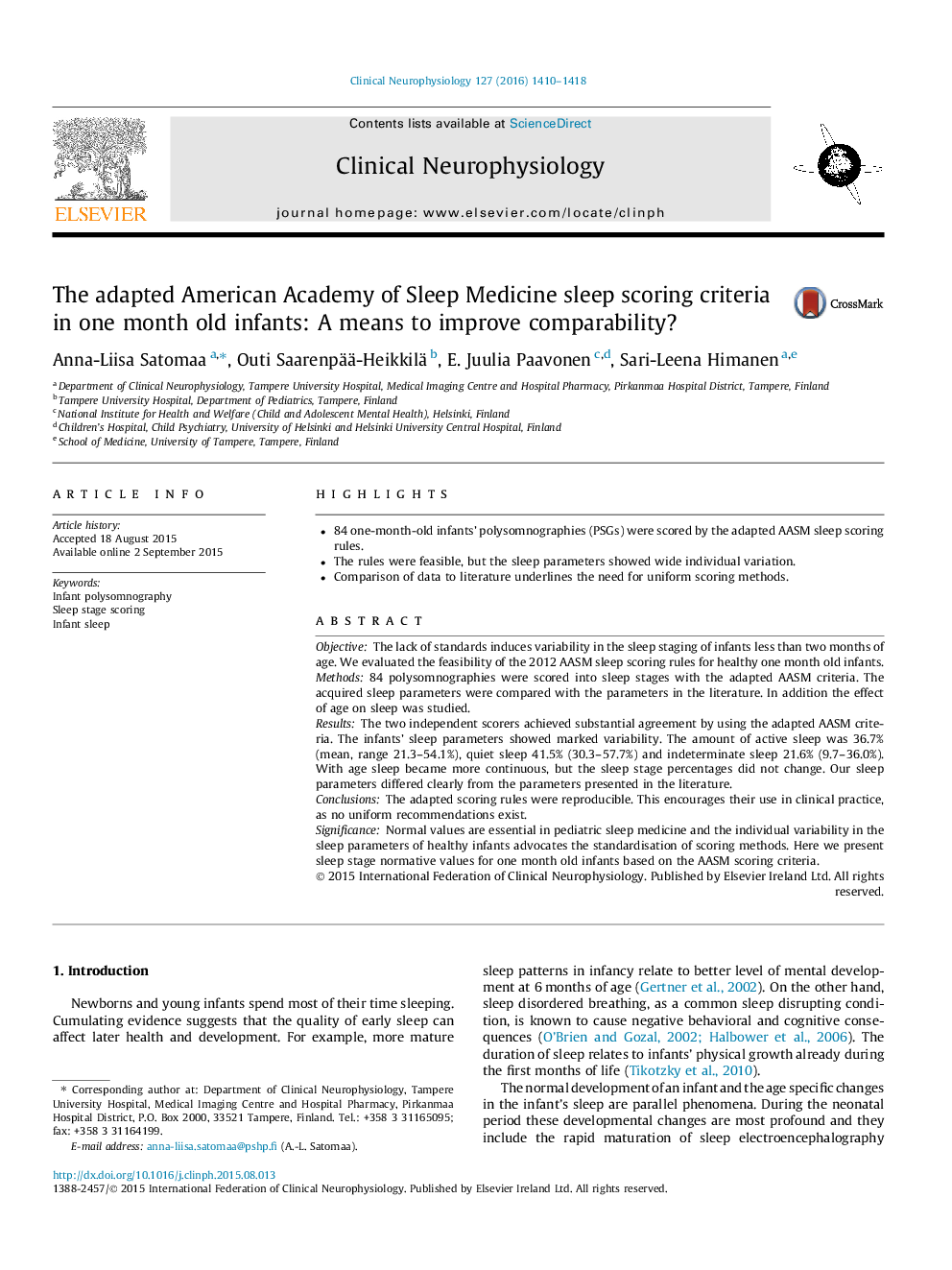| Article ID | Journal | Published Year | Pages | File Type |
|---|---|---|---|---|
| 6007607 | Clinical Neurophysiology | 2016 | 9 Pages |
â¢84 one-month-old infants' polysomnographies (PSGs) were scored by the adapted AASM sleep scoring rules.â¢The rules were feasible, but the sleep parameters showed wide individual variation.â¢Comparison of data to literature underlines the need for uniform scoring methods.
ObjectiveThe lack of standards induces variability in the sleep staging of infants less than two months of age. We evaluated the feasibility of the 2012 AASM sleep scoring rules for healthy one month old infants.Methods84 polysomnographies were scored into sleep stages with the adapted AASM criteria. The acquired sleep parameters were compared with the parameters in the literature. In addition the effect of age on sleep was studied.ResultsThe two independent scorers achieved substantial agreement by using the adapted AASM criteria. The infants' sleep parameters showed marked variability. The amount of active sleep was 36.7% (mean, range 21.3-54.1%), quiet sleep 41.5% (30.3-57.7%) and indeterminate sleep 21.6% (9.7-36.0%). With age sleep became more continuous, but the sleep stage percentages did not change. Our sleep parameters differed clearly from the parameters presented in the literature.ConclusionsThe adapted scoring rules were reproducible. This encourages their use in clinical practice, as no uniform recommendations exist.SignificanceNormal values are essential in pediatric sleep medicine and the individual variability in the sleep parameters of healthy infants advocates the standardisation of scoring methods. Here we present sleep stage normative values for one month old infants based on the AASM scoring criteria.
